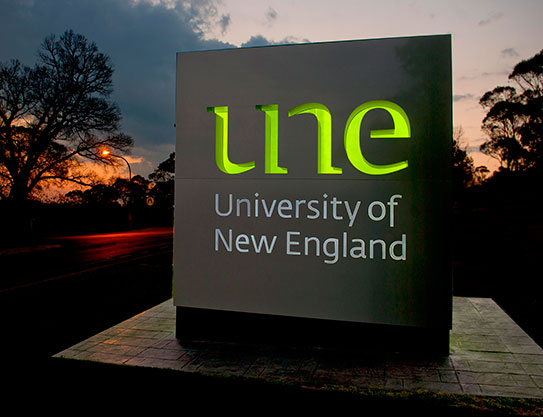The study, by Nous Pty Ltd and the Centre for Policy Studies, found that the RUN group contributed $1.7 billion to real GDP in their regions through growing the skilled workforce in the regions and increasing wages; driving demand through increases in private and government consumption and international and interstate exports; and contributing to industry through research and knowledge capital.
“I have long advocated on the value and contribution of regional universities to their communities. It is gratifying to see that importance quantified in real terms,” UNE Vice-Chancellor Annabelle Duncan said.
The study shows seven out of 10 working RUN graduates are employed in a regional area, compared to two out of 10 of all Australian university graduates. For UNE that translates to 62% of undergraduates and 46% of postgraduate returning to work in a regional area.
“By increasing employees’ skill levels, we are contributing to their productivity in regional Australia, especially in the areas of Agriculture, Environment and Related Studies,”
“The study confirms that our graduates are more productive than average if measured by average wage. The 2018 Good Universities Guide awarded us five stars for Median Graduate Salary and rated our business and management graduates as the best paid in the country.”
The RUN group comprises the University of New England, CQUniversity, Federation University Australia, Southern Cross University, University of Southern Queensland, and the University of the Sunshine Coast.
Together the group educate around 115,000 higher education students each year – about nine per cent of all university students nationally. Between them, the universities spend $1.59 billion and their students $480 million in campus regions.
“Our real economic impact will be much higher,” Prof. Duncan said. “The study only considered the impact of domestic higher education students and did not factor in the contribution to GDP by international students. I’m looking forward to seeing those numbers quantified in future studies.”
The study further showed that RUN member universities not only produce, attract and retain a broad range of skilled professionals in regional areas – 6,000 equivalent/ full-time staff – but also conduct research and train over 2,600 higher degree by research candidates each year.
With ongoing political scrutiny into the indicators of regional inequality and reference to building human capital in regional Australia, the report findings are of national relevance.


